Game Reviews: Planet of Lana, Doki Doki Literature Club, Strikey Sisters and Persona 5 Royal
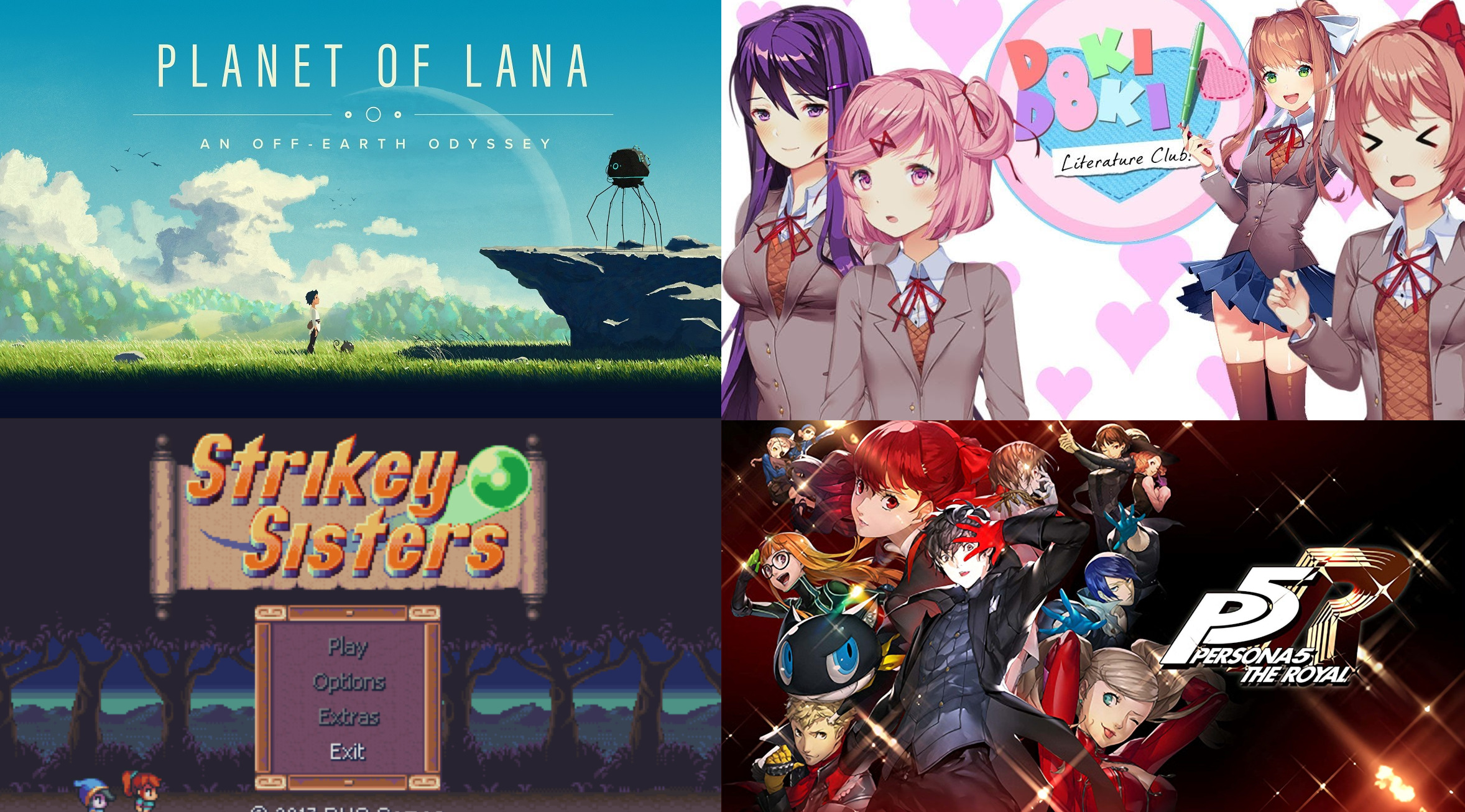
It’s been a while since I posted my last set of game reviews. Over the fall and winter, I played mostly PC games and a single PlayStation 5 title. Planet of Lana was a fun side scrolling puzzler. Doki Doki Literature Club is a cult classic visual novel and psychological horror game. A friend gave me a free key to Strikey Sisters, a fun and short Brickles clone with fantasy elements. Finally, on the PS5, I spent more time playing Persona 5 Royal than all the other games combined.
Planet of Lana
Planet of Lana is a beautiful side scrolling puzzler. It’s similar to Limbo, Inside, or either of the FAR Lone Sail games. It takes place in a village on an alien world. The characters all speak their own language (saving on localization and voice acting costs). Simple hiding, climbing and puzzle solving mechanics are gradually introduced before the small village is upended by a full scale invasion from space fairing ships and robots.
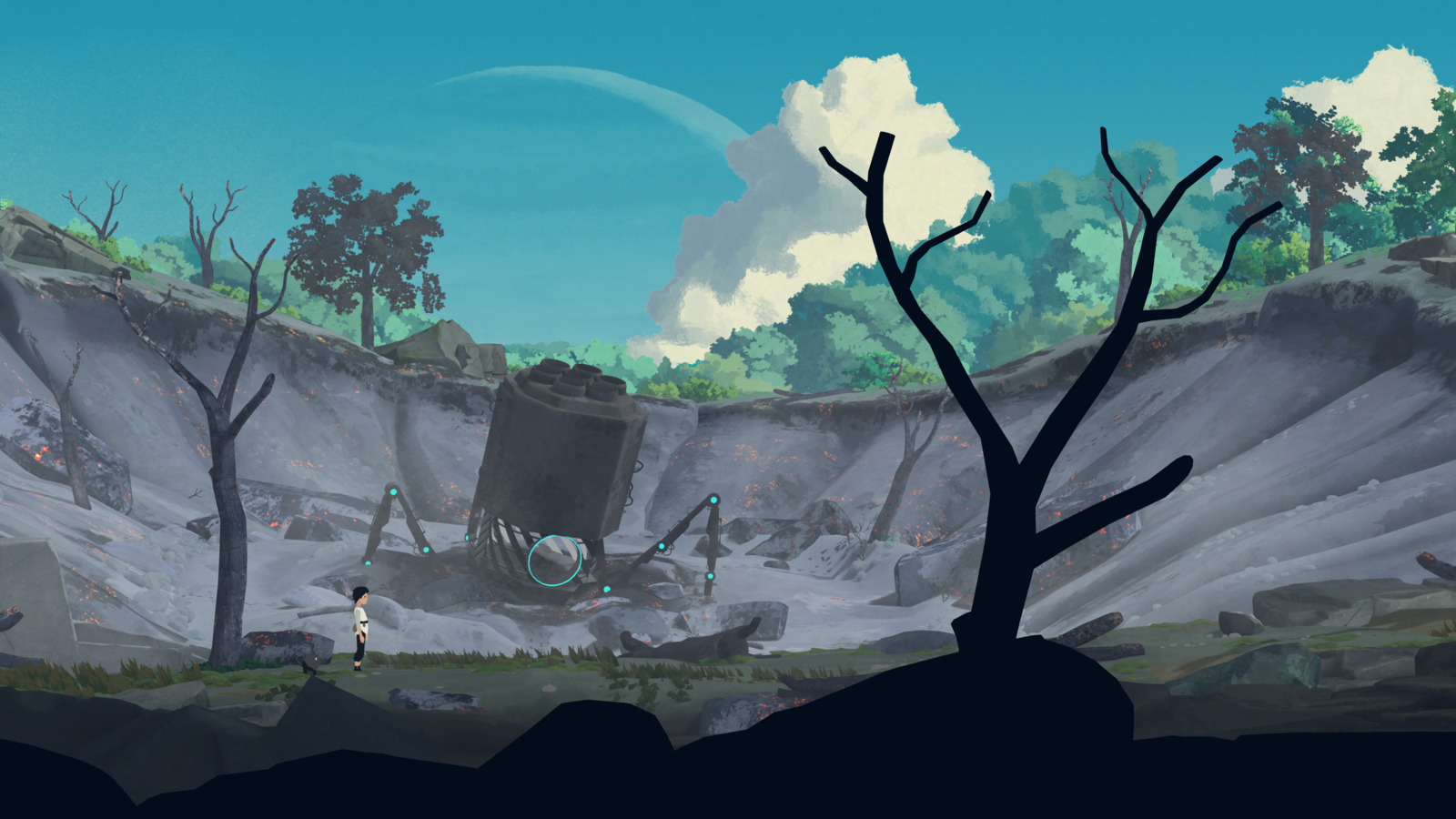
The Scene
The artwork in this game is superb. The first few chapters take place in the forests and use a bright, vibrant green color pallet. Subsequent settings include dark blue swamps, sandy deserts and gray futuristic structures. There are interludes between major chapters with incredible music and vocals, which really pull the game together.

Gameplay
The gameplay involves typical left to right platforming and puzzles. For most of the game, you have a companion that can be ordered around. Your companion can jump high and far, but cannot swim, creating interesting challenges for getting both of you through each scene. I really enjoyed the puzzles. Some of them were quite creative. Even though they were all similar, the overall flow never really got old or monotonous. Character death is pretty constant, but it’s not as gruesome as Limbo.
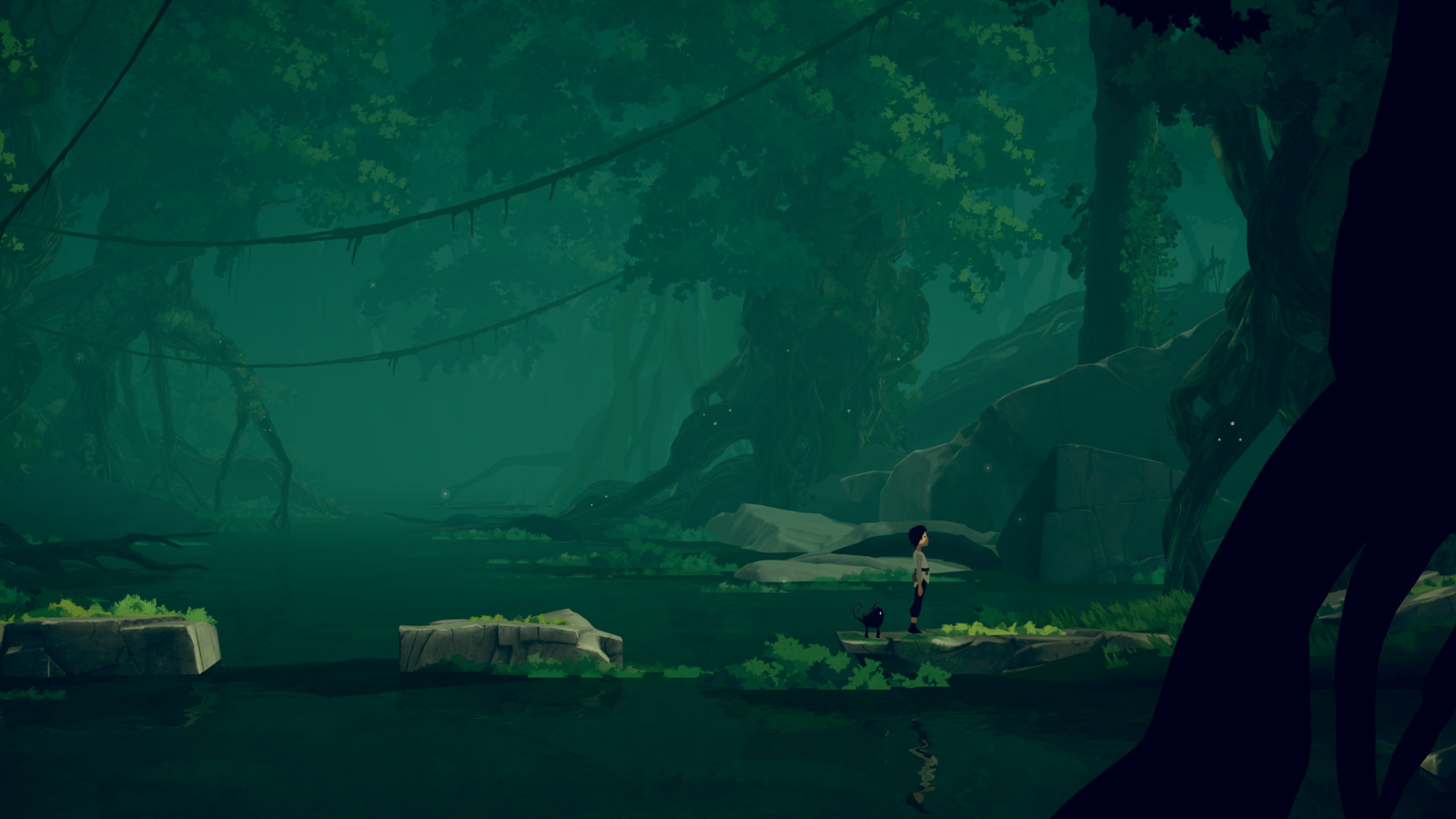
Overall
There aren’t a whole lot of characters in this game. Their obscure language leaves an aurora of mystery over some of the details in the story, even though it has a concrete ending. I finished the journey in five and a half hours according to my save game, and seven according to the Steam game timer. It’s really the perfect length for this indie title, filled with fun puzzles, beautiful artwork, memorable music and a complete story.

Doki Doki Literature Club
I’ve never played a game in the visual novel genre before. After playing Doki Doki Literature Club, I’m not sure if it counts. This five hour narrative adventure starts with strong content warnings, leading me to believe I’d be plunged directly into the center of a psychological horror. The first time I attempted it, I got about eleven minutes into the game and was so bored I didn’t touch it again for months. It was only after seeing a random product with artwork from the game, that I decided to finally finish it1.
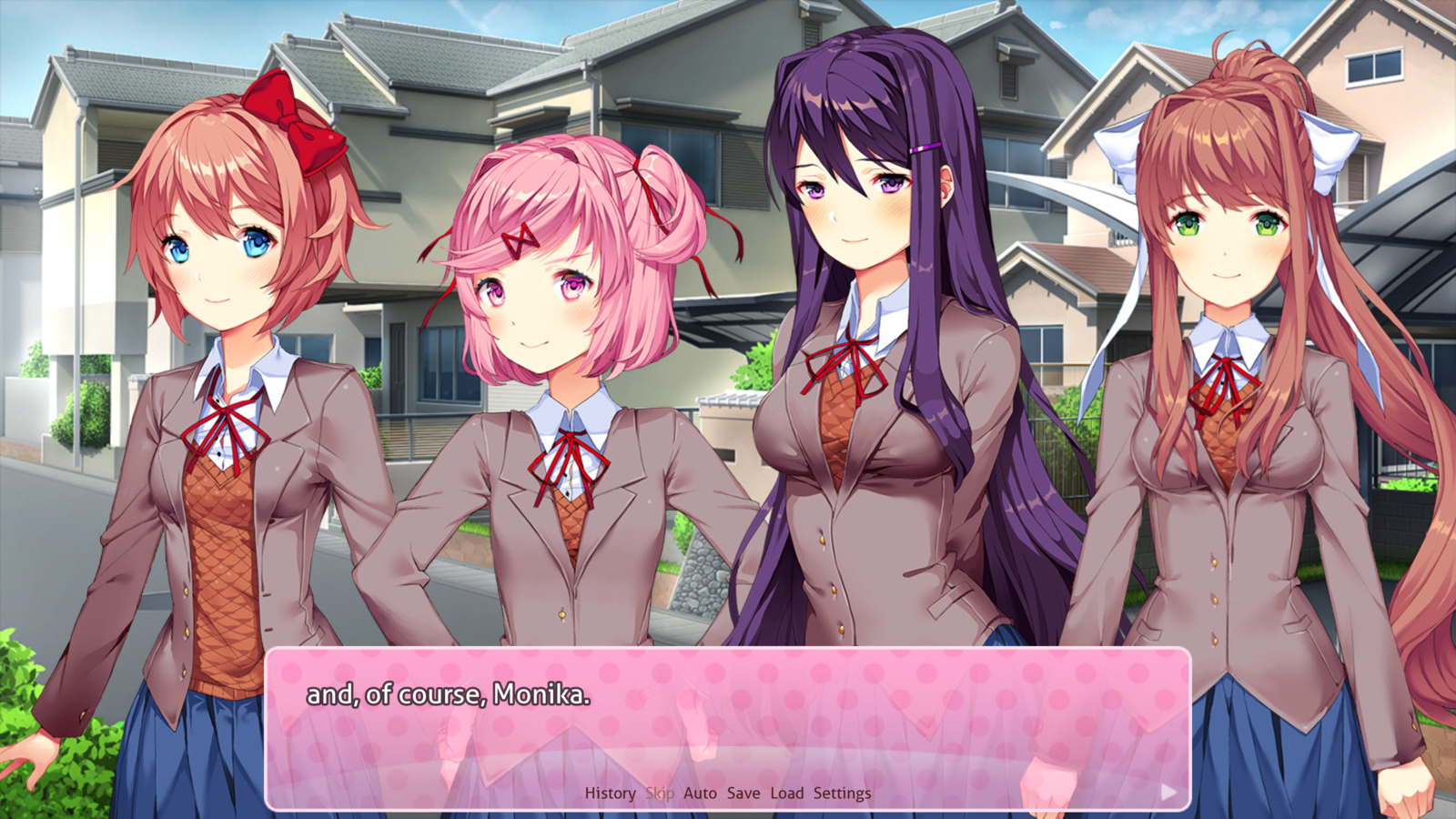
Changing Your Name
First off, in a lot of role playing games where you choose the names of characters, you’re introduced to them first via some short gameplay and story. It helps the player decide on an appropriate name. Doki Doki Literature Club asks for a name at the very beginning, without any cues as to if your character is a man or woman. This can be super annoying if you’re twenty minutes in and the character name doesn’t fit at all. It’s surprisingly hard to change the main character’s name, with most guides suggesting you just delete your save data and start over. If you’re on PC, I discovered you can edit your name with a few simple steps.
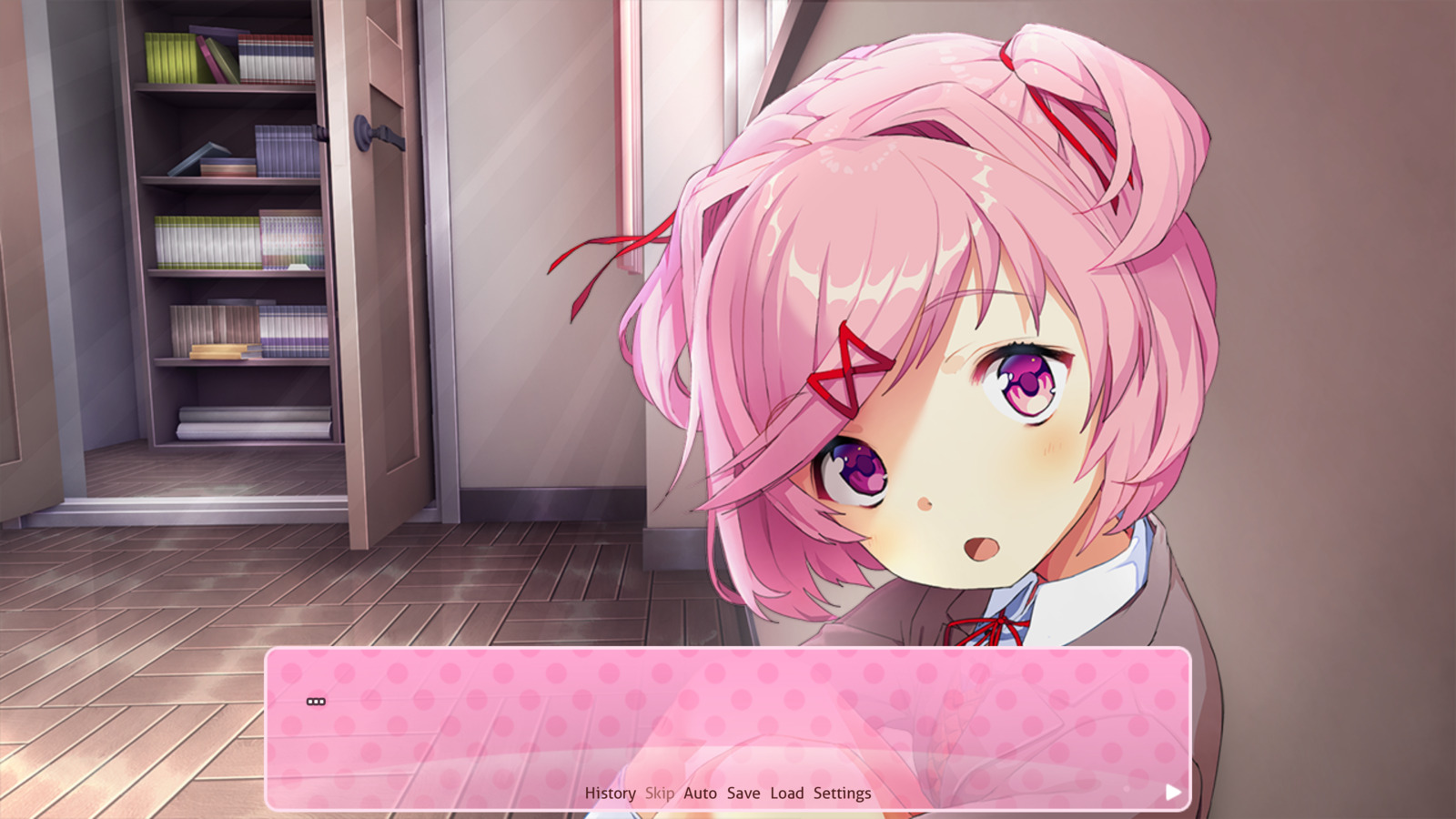
Doki Doki Literature Club is made using the RenPy visual novel engine. It stores the players name in the persistent file2, but there’s little information on this file’s format3. The RenPy engine does have a development console, and the unren program from mrunkel shows that the console can be enabled by created a file named C:\Program Files (x86)\Steam\steamapps\common\Doki Doki Literature Club\game\unren-dev.py with the following configuration4:
init 999 python: config.developer = True config.console = True
After creating this file, you should be able to use Shift+O to open up a development console and change the variable player to the name you want for your player4. Be sure to quote the string like so: player = "Bob"

Game and Story
Doki Doki Literature Club has the initial appeal of a slice of life anime. It repeats many of the same graphics over and over, relying a lot on dialog and exposition. The story is incredibly boring, and the choices very basic. Picking words from a notebook to form a poem may seem like it has an impact on the story, along with the standard choice boxes found in visual novels. However, the game attempts to be subversive, reminding the player of those content warnings at the beginning long after they’ve been forgotten about. There is some fourth wall breaking, and there are even minor puzzles and Easter eggs hidden outside the game.
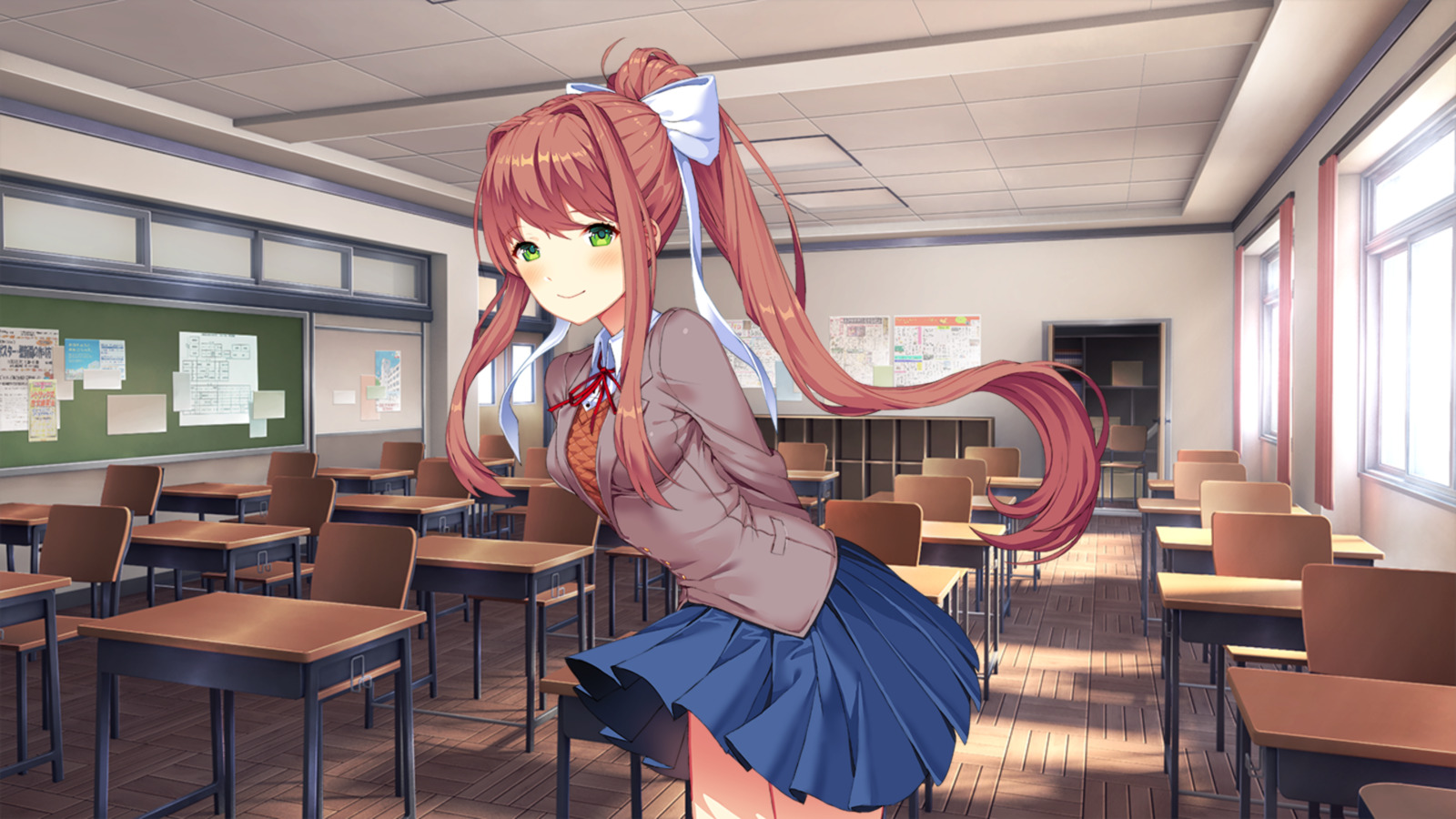
The game doesn’t disappoint on the dark themes it teases from the beginning. More time and detail are spent on the artwork and visual styles towards the end of the adventure, and there are even more fourth-wall breaks. However, there doesn’t seem to be anything really profound with the final act of the game. The characters are developed and memorable, but the game tries to pull the audience into a realm of depth I don’t think it deserves. For a visual novel that’s made it onto so many different consoles and platforms, I expected something more from this title. The final act is interesting, and there some things that can be discussed about the games motivations once the final credits roll. However, it still feels a little gimmicky. I’m glad I played it, but I’m not sure if it was worth the five to six hours of text that must be sifted through.
Strikey Sisters
Strikey Sisters is a fun take on the classic game of Brickles, mixed with monsters, fantasy, and a story about rescuing a lost pet. The gameplay is fast and challenging, without being overly difficult. I got a free product code for this game from a friend of mine, and I casually finished off the main adventure over the course of three weeks.
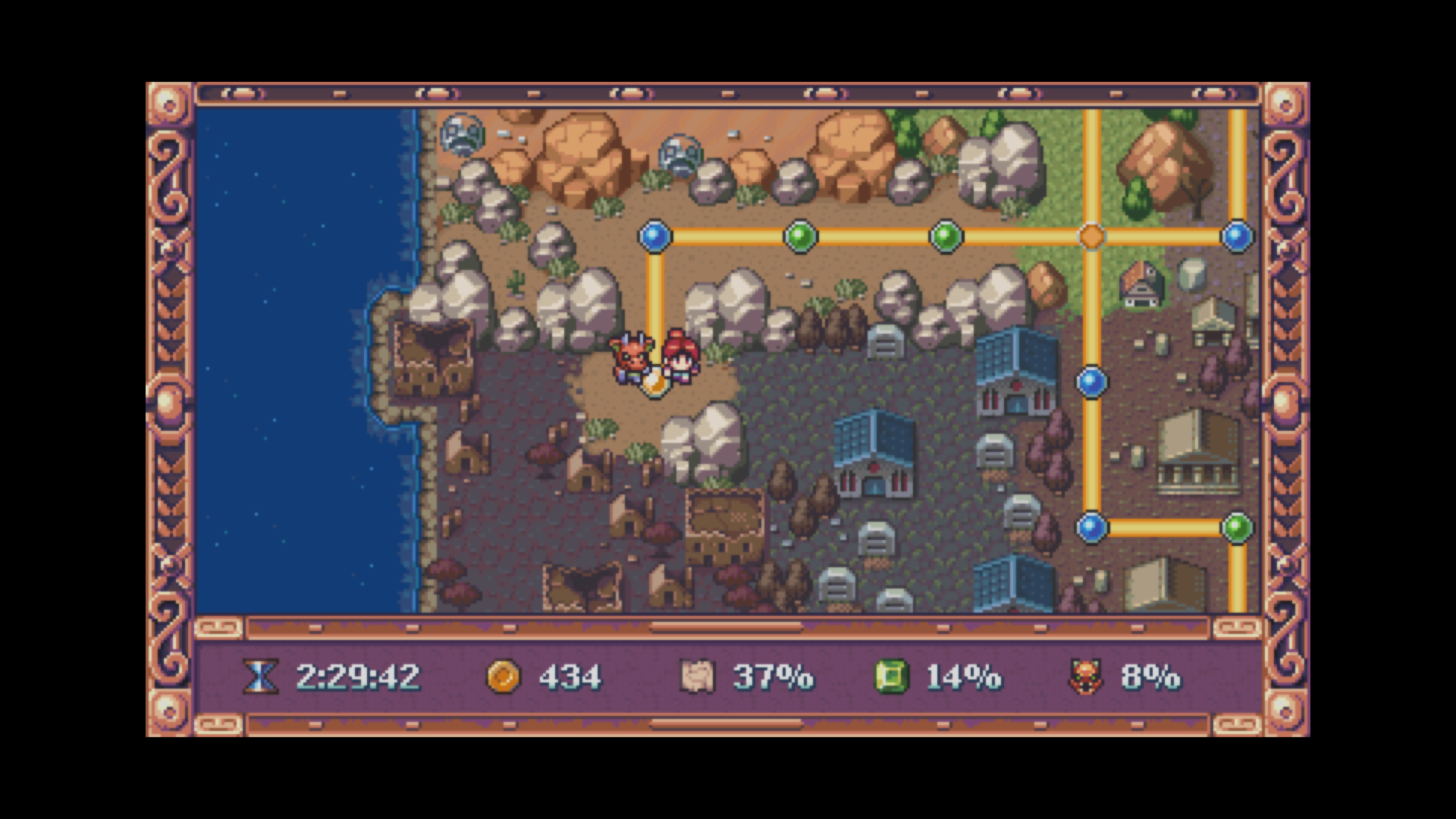
Gameplay
The gameplay is fairly simple. Your character needs to intercept a ball, keeping it floating in the air to hit bricks, monsters, and occasionally bosses. You can strike the ball to hit it faster, and you can collect power-ups and health from enemies. Some power-ups get applied to your ball immediately, making it faster, slower or stronger. Others get stored as a spell which can be triggered.
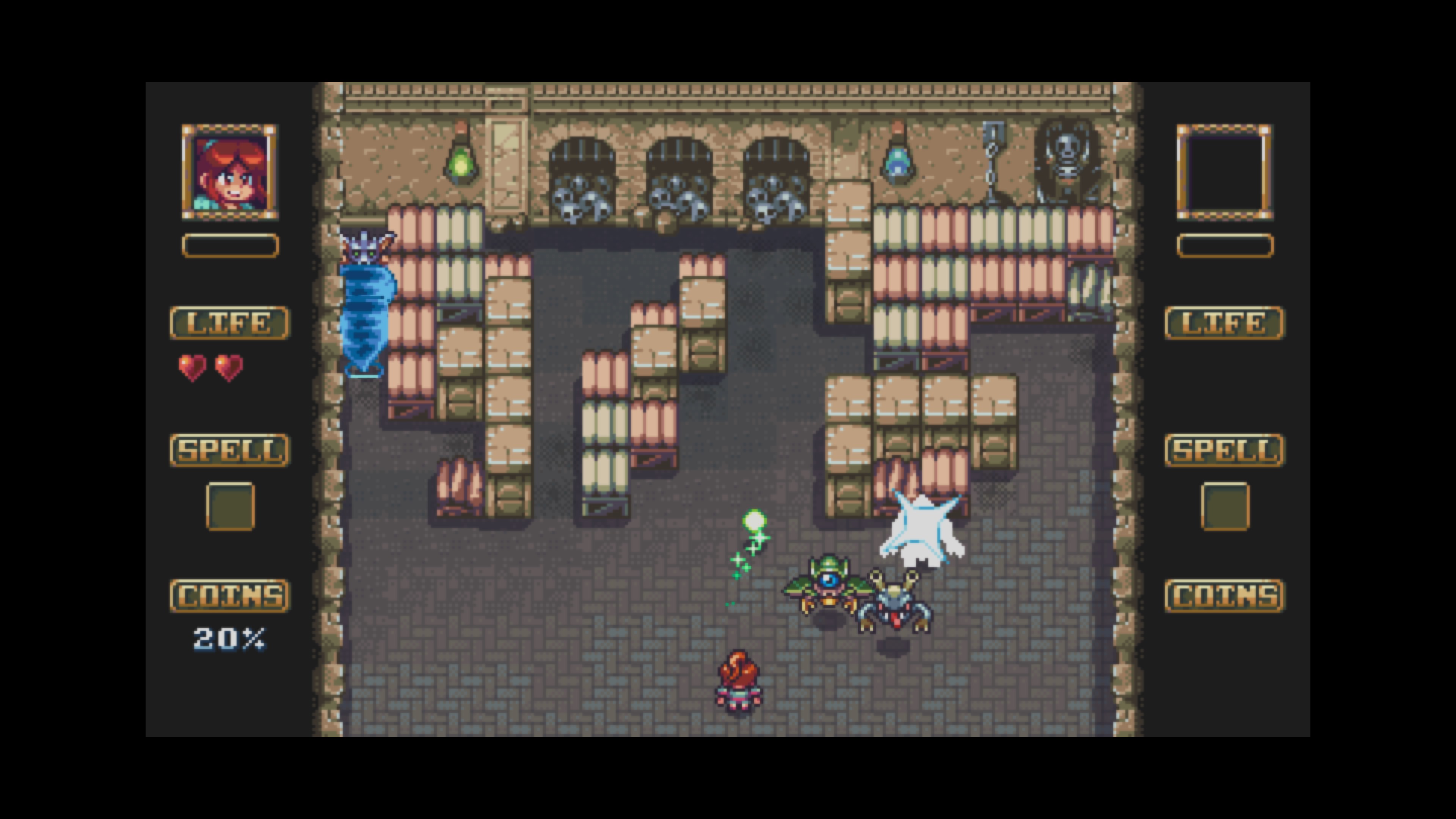
Health is limited to three hearts, which can be lost by taking damage from enemies or by losing a ball. Most attacks can be countered with a strike, although some come fast enough that it’s better to dodge. Sometimes your ball can get lost in all the action, but generally its flashing animation makes it easy to keep track of. The dead-zones and collision areas all make sense and keep the game from getting too frustrating. The gameplay was challenging, but achievable.
Story
For an independent title, there is some voice acting. Bosses contain cut sequences, and the story revolves around the two main characters searching for a lost pet. The dialog is silly. There’s an underlying theme about not being poor, or … sharing, or something? It doesn’t really matter. The story is the weakest part. I think there might be some social commentary in there, but thankfully, it’s easily ignorable.
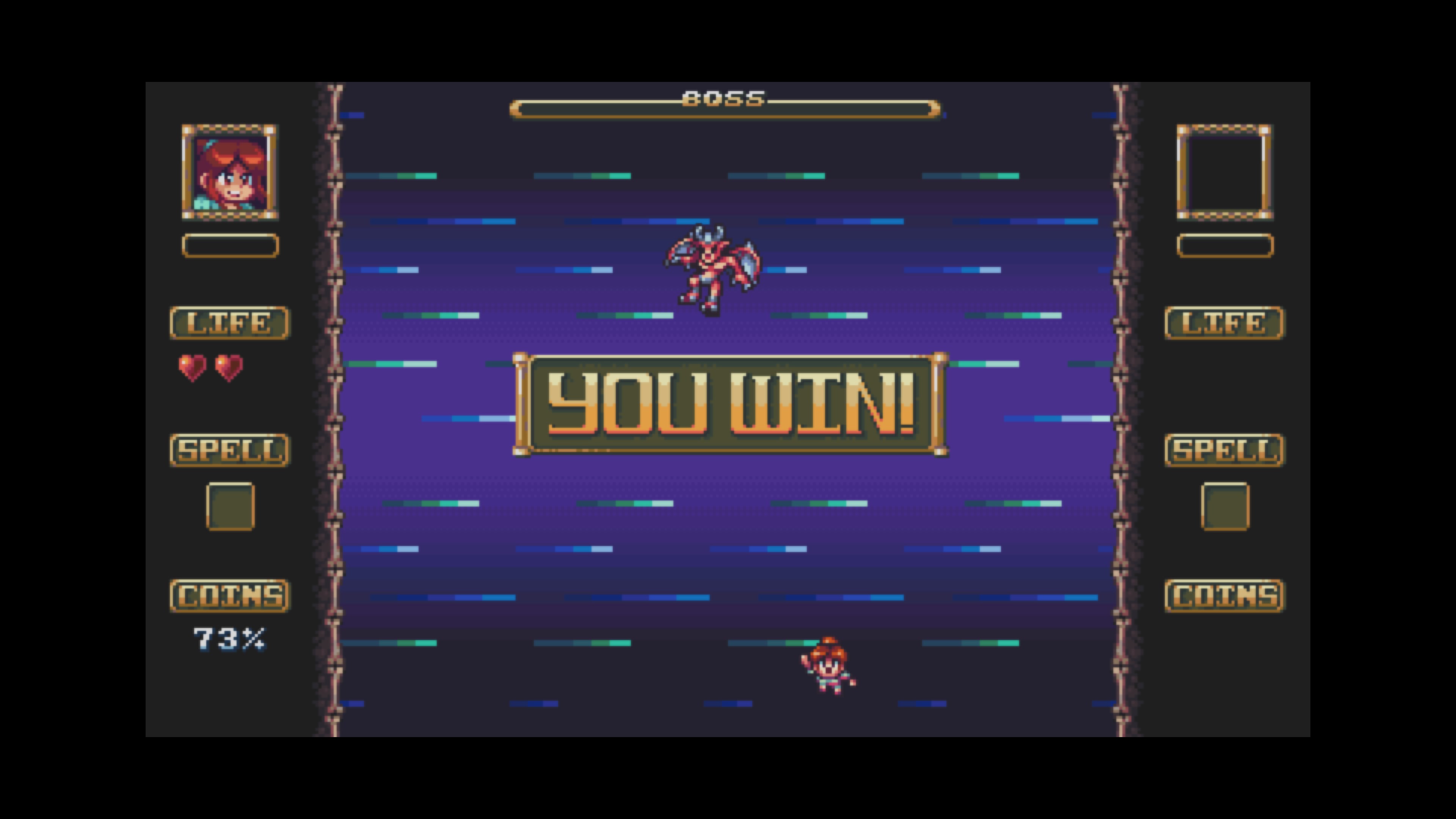
Overall
Strikey Sisters is a great little independent title. It hooked me in early on. Although it supports two players, I was able to complete the entire game on my own in under eight hours. Even after fighting the final boss, there are other areas I didn’t unlock, meaning you could get much more mileage out of this title. Strikey Sisters provides plenty of challenge, has a good variety of enemies, and feels about the right length.
Persona 5 Royal
Persona 5 Royal is the first game I’ve ever played in the Persona franchise. It’s a Japanese role playing game, with a lot of fast paced anime themes mixed into a classic high school drama. It also has supernatural elements, and a talking cat (that’s not a cat). It’s a game that took a while to get into. Although the game mechanics are really fun and addicting, the initial pacing is slow and the overall story seems to drag. It’s a very long title. At 107 hours of play time, it’s one I’m glad I finished, but not sure if it was worth starting.
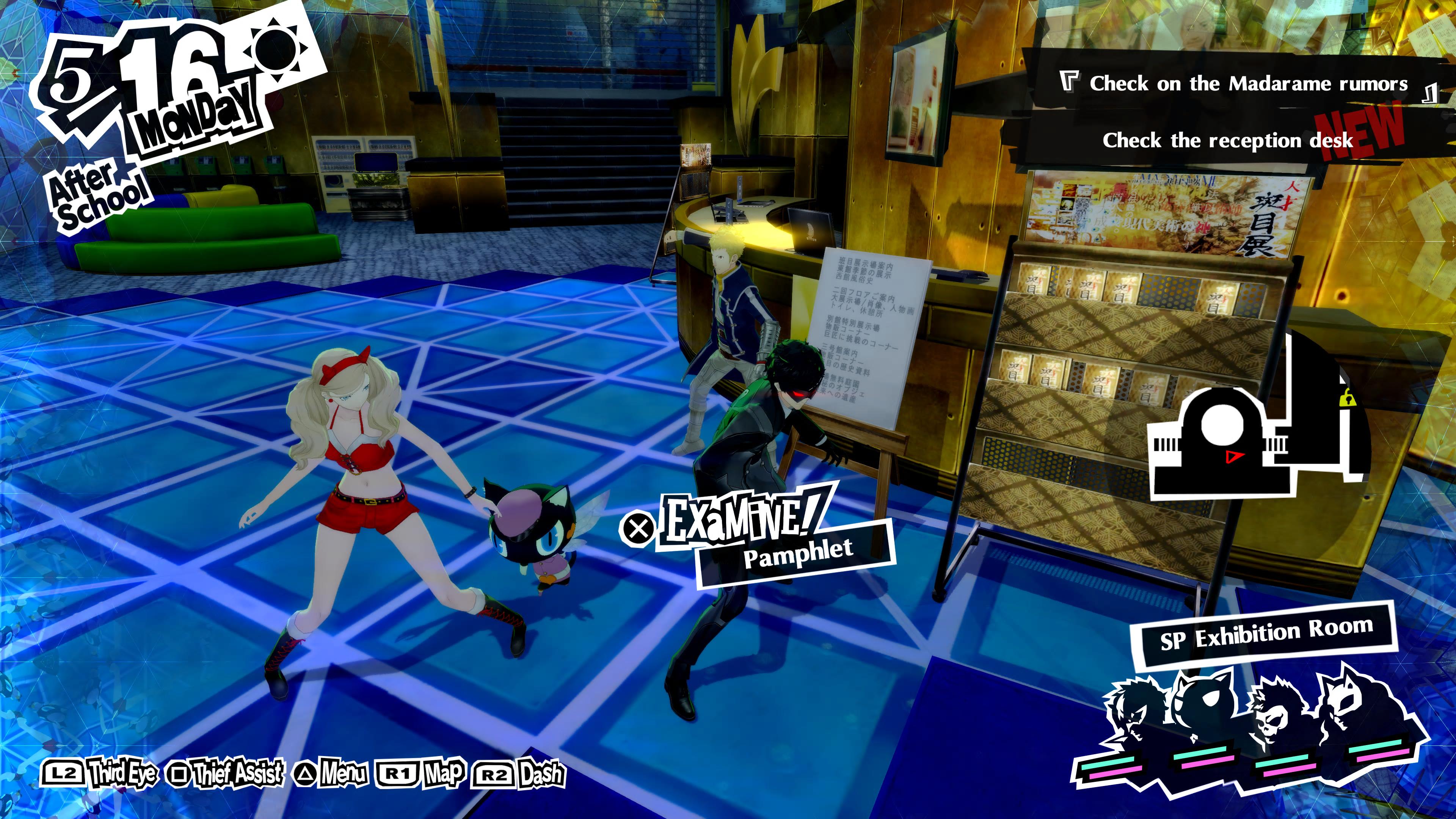
Gameplay
At its core, Persona 5 is a dungeon crawler. The dungeons are called “palaces,” and your party changes peoples’ hearts by infiltrating and completing those palaces. The battles are turn based, and it’s very easy to sneak around and see or avoid enemies. There are no random encounters. Experience builds up a “persona,” which is a representation of each character’s power and identity in the alternative world. Saving is not automatic, and must be done manually in safe areas.
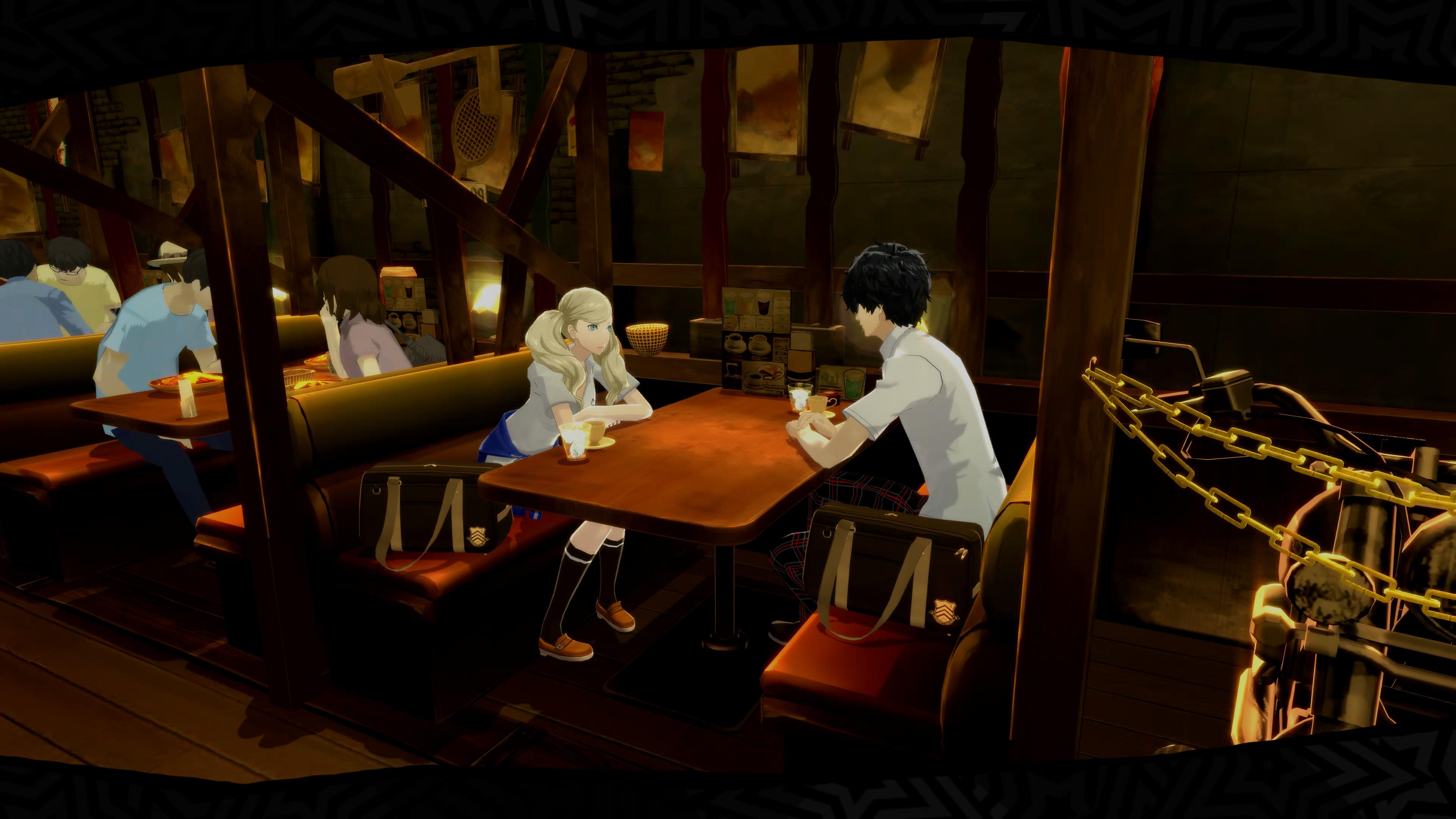
The main character has the ability to combine personas via a mysterious ghoul that visits him in his sleep. Building certain items in the world outside the dungeons upgrades players abilities while transversing the palaces. Between each dungeon, relationships, side stories and skills can be pursued. There are several “confidants” (the game’s version of “familiars”), who can grant additional skills as you build relationships. Each day consists of school, and time slots afterwards. Some actions, like buying items or visiting stores, don’t take up any time in game. Visiting certain people, or building skill, will use up the after school and evening time slots.
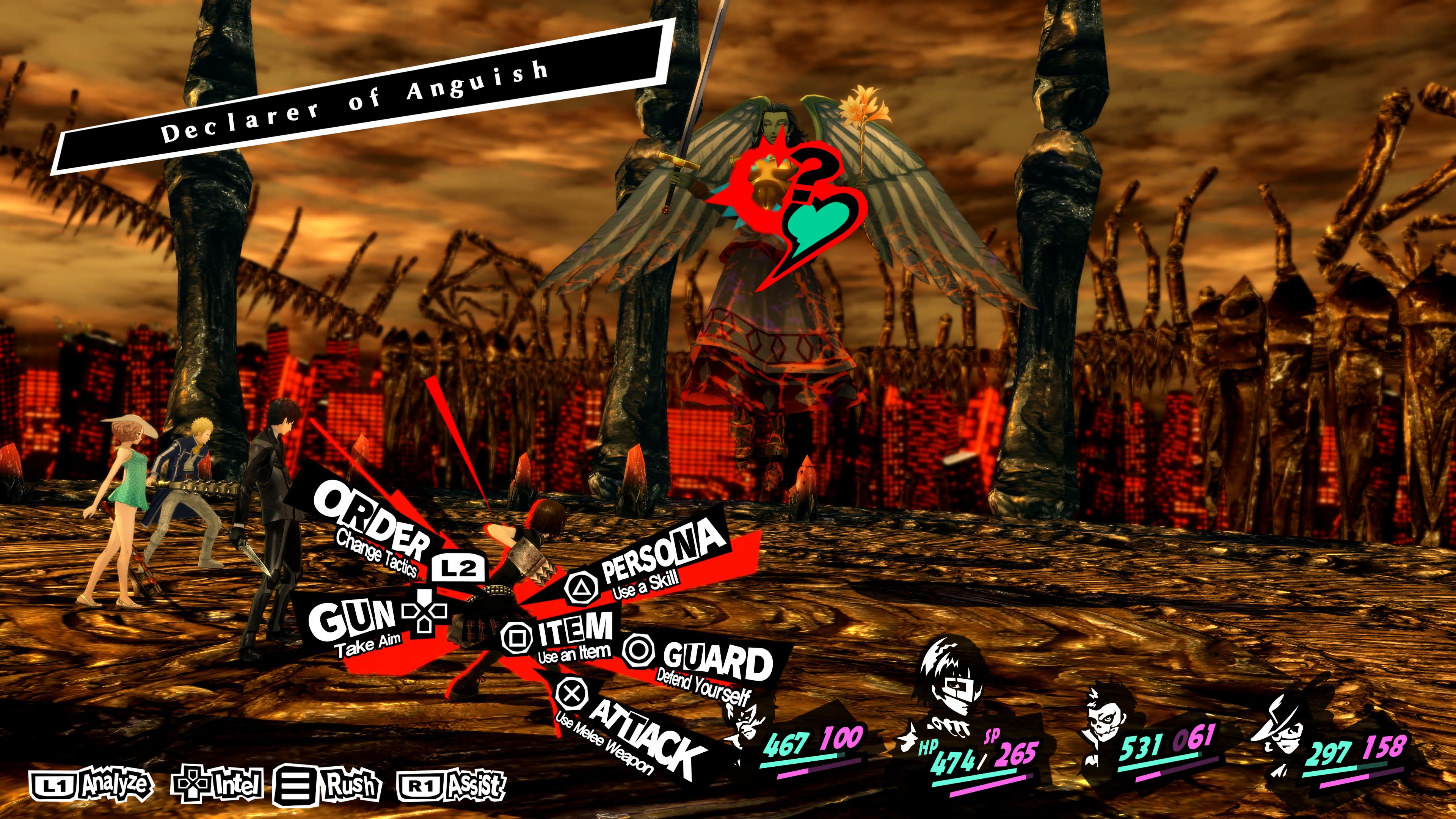
Overall, Persona 5 takes board game skill building mechanics, interleaves them with a dungeon crawling RPG, and throws in monster collecting. Individual character interactions build story, and increase their support skills. The calendar and skill building aspects are similar to those in Fire Emblem: Three Houses. The battle animations are fast paced, with vintage pulp comic themes. It’s a pretty addictive set of mechanics, but it’s slow to build and get into.
Story
Initially, learning how the game mechanics work, and the story itself is painfully slow. Three to four hours into the game, the player is still learning basic things, both in the limited gameplay, and in how skill building works in the world. It’s a traditional high school drama, showing that even Japanese writers can make things as crappy and unbelievable as 1990s Nickelodeon teenage soap operas.
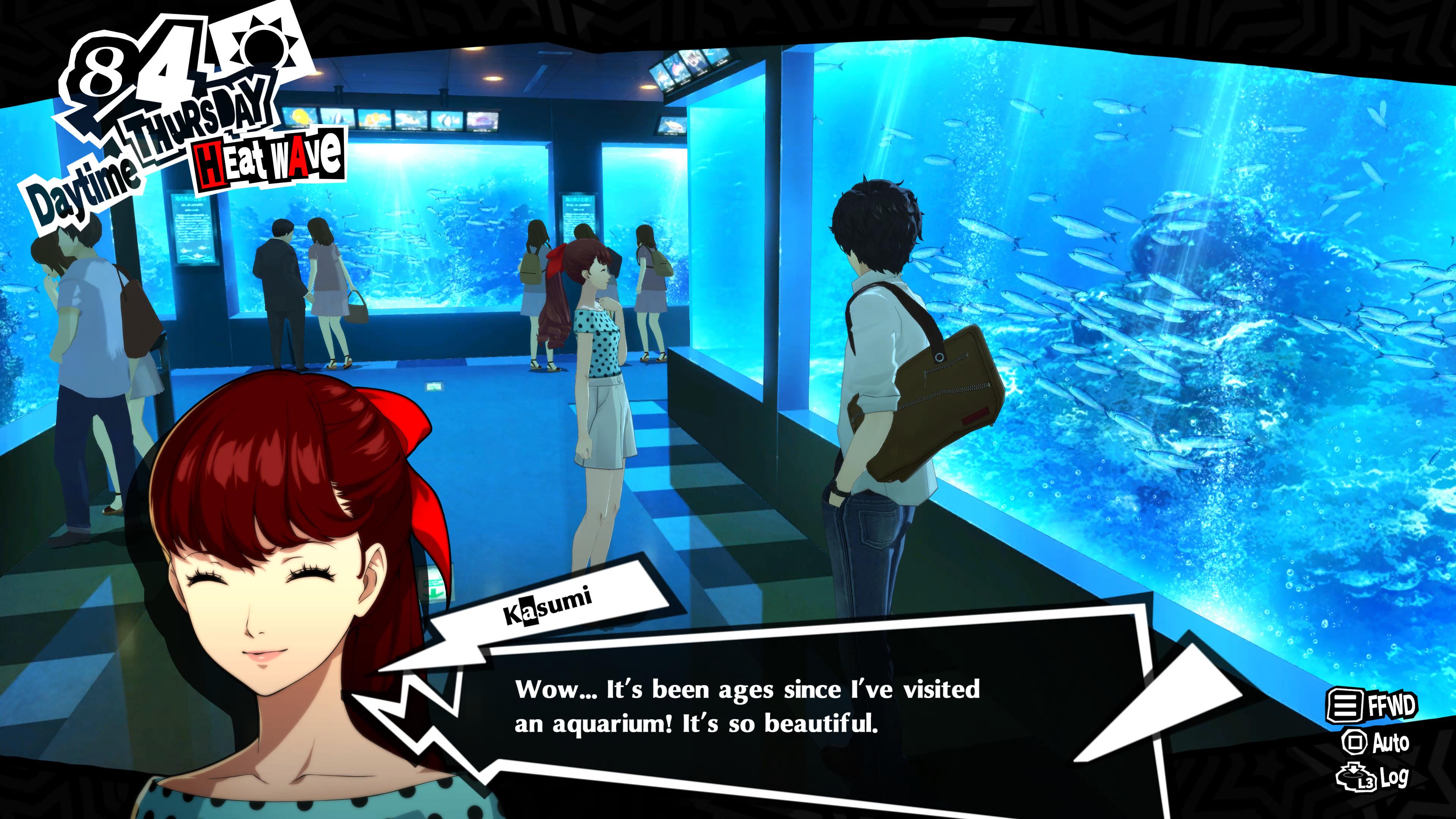
The story starts over half way though the game’s timeline. It introduces some advances mechanics you use once and forget about for hours, as the game jumps back to the past. There are occasional flash forwards when building contracts with new confidants, reminding you of the time gap. Most of these are just kind of weird and annoying, and it’s at least 80 hours of gameplay before you catch up to the present. Although I liked the little poems about vows book-ending each confidant’s story, the flashes through time got old and the dialog wasn’t very good.
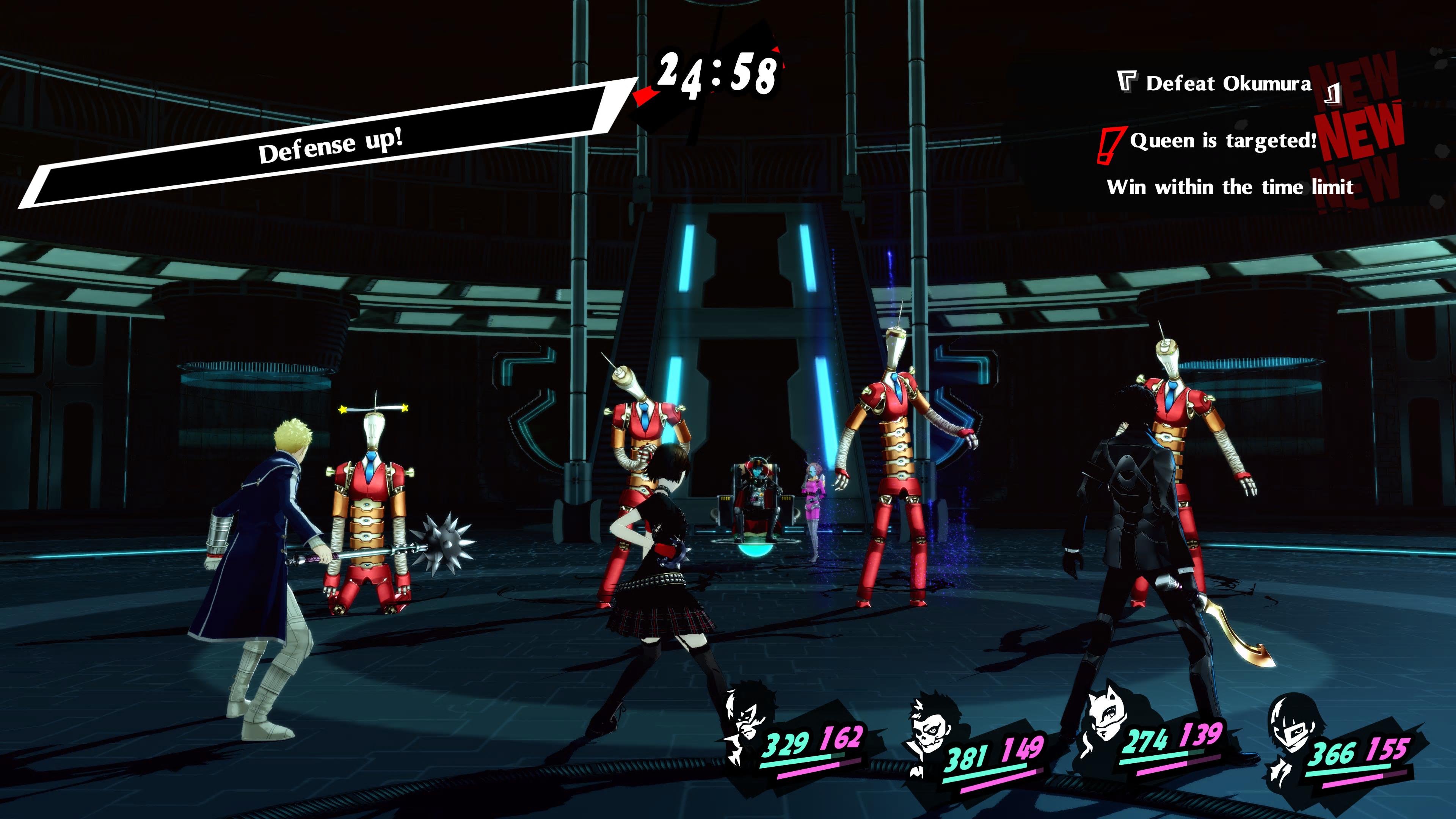
I enjoyed a lot of the support conversations and side stories in this game. You can build romantic relationships with some of the characters, so choose wisely. However, the overall story seemed like a jumbled mess. The game invites powerful themes about morality and conflict over how the main characters enter peoples’ minds. The election story arc is a little thought provoking, and it’s creative in the way the player’s view of politics can easily be projected onto the story, not matter their party affiliation. However, most of the complex moral quandaries are never really flushed out beyond the classic 1990’s vigilante vs hero questions.
Odds and Ends
I initially started playing this game in English, and occasionally switched to Japanese. Both sets of voice actors are pretty good. If you use the Japanese audio, not everything is translated. The ending battle sequences, showtime battles, in-game skill building movies, and other minor flashes of audio don’t have any subtitles. Some of the combat sequences move so fast you can’t read some of the cards when they are present. I played dozens of hours in both languages and I would recommend playing at least half of the game in Japanese, as it helps cover up some of the bad writing and campy dialogue.
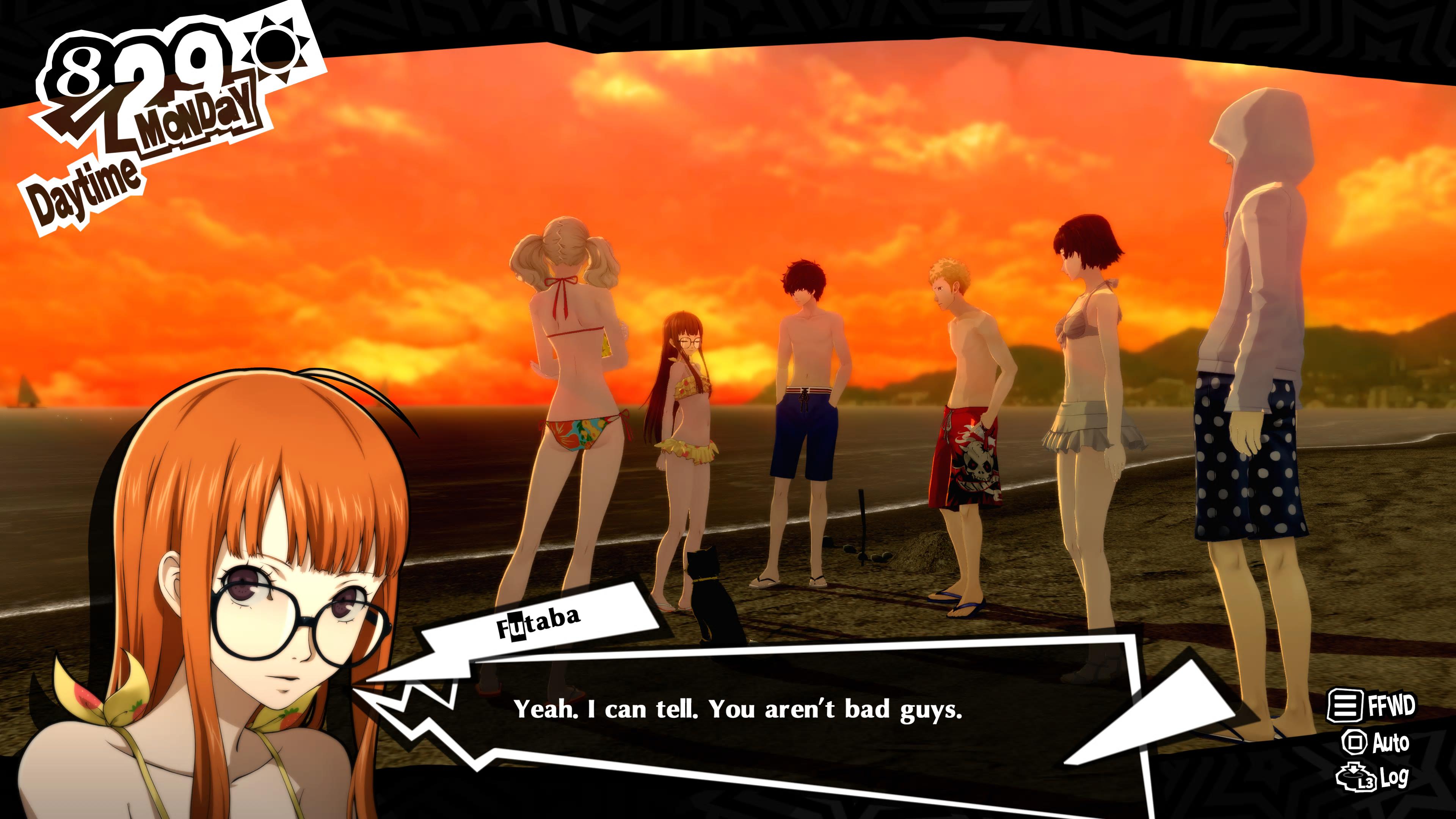
For the most part, the game is a relaxing, turn based, RPG. There are no real action sequences. Half way through the game, there is a dungeon that sets a time limit, and has a completely unbalanced and ridiculous boss battle. It took me several hours and several guides56 to beat the famous Okumura boss fight. It’s not even close to the end of the game, and nothing else compares to it. It’s the most out of place and unbalanced fight in the entire game7, and really takes down the overall fun experience.
The music is nothing to write home about. There are a few parts of the game that have really beautiful jazz vocals in English, that really help build out the world. However, most of it gets repetitive, and the light motifs change abruptly within the story. The music for the underground Mementos dungeon is the absolute worst.
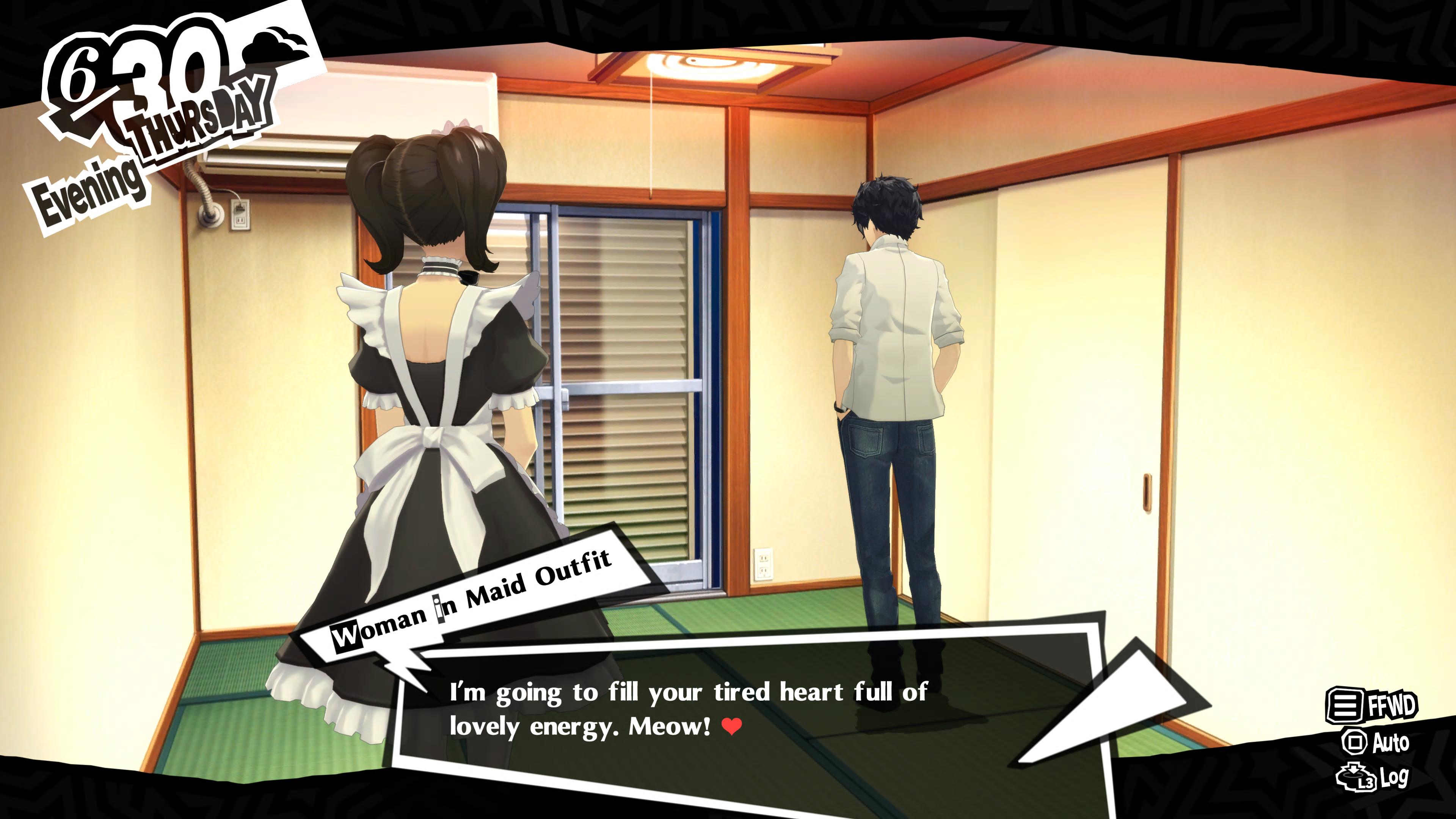
The user interface is really snappy. There are no large worlds that take forever to transverse. All the shops and useful locations are on small maps, and the fast travel really cuts down on anything tedious. The UI and game mechanics really make the game addictively fast paced, dramatically different from the obnoxiously slow story and dialog.
On the PlayStation 5 version, screen captures and recordings are disabled for the entire end game and epilogue. This is the first time I’ve seen this in a console game, and it’s super annoying. It’s impossible for most people to capture any cool moments at the end of the game, but it doesn’t prevent streamers with dedicated capture equipment from doing so.
Conclusions
Overall, this game was difficult to get into. It took sticking with it for several hours for the game to become interesting. Although the mechanics became addictive, and a small amount of the music and character interactions were interesting, a lot of the game was an absolute slog. This is the kind of game that would have been better if they cut out half the content. If you want a game that’s a beautiful mix of high school anime drama mixed with science fiction, 13 Sentinels Ageis Rim is a far superior game, with more character depth at less than half the runtime.

Persona 5 Royal was my introduction to the Persona franchise. After playing it, I’m not sure if I’ll pick up another game in the series any time soon. It has a lot of mechanics I’ve seen in several other RPGs, but the dialog just goes on endlessly. The basis for the characters’ missions and mind manipulation felt very basic, with only a few places in the game that posed interesting moral quandaries. Although some of the characters and levels are unique and memorable, it was simply too long of a slog for me to recommend, even to die hard RPG fans.
Winter Games
The independent titles I played were certainly more enjoyable than the more well known ones this time around. I didn’t do as much gaming as I thought I would over the winter. I still played through some great titles, and got sucked into one not-great game. There are a few I haven’t quite finished yet, while I’ll cover in the next set of reviews.
-
Is this … is this suppose to be the Quintessential Quintuplets (If so they’re missing the green one), or generic anime girls or some other show I’m not familiar with?. 8 November 2023. @djsumdog@djsumdog.com Archive ↩
-
what is the file that saves the name that I enter at the start of the game. 23 Mar 2019. u/natsuki_is_the_best_ /r/DDLCMods ↩
-
Edit/Decoding the Presistent File?. 18 Nov 2021. u/TheSpoonfulOfSalt. /r/RenPy. Reddit. ↩
-
unren/unren.sh at master. Retrieved on 16 Feb 2024. mkrunkel. Github. RAW ↩ ↩2
-
Wow, f*** the new Okumura boss fight.. 2 Jan 2021. BipBapBam. GameFAQs. ↩
-
How to beat Okumura boss fight?. 12 Jan 2023. Killermoose69. Steam Community Persona 5 Royal General Discussion. ↩
-
Why is shadow Okumura SO HARD IN THIS GAME. 8 April 2020. GeeGollyJester /r/Persona5. Reddit. ↩